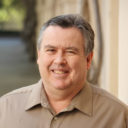Transhumanism: A Secular Technological Vision of Future Things
The desire to live forever is one of the greatest longings of the human heart. Great Christian thinkers and writers—from St. Augustine to Blaise Pascal to C. S. Lewis—have observed that human beings were made to commune personally with the Lord God Almighty. It makes sense, then, that this temporal world and its offerings cannot ultimately satisfy. Thus, according to Christian theology, believers in Jesus Christ will find their future home and fulfillment in the next life, in the eschatological City of God (Revelation 21:1–4).
Yet many people seek fulfillment in alternative religions and in competing worldviews. If the Bible is correct in asserting that all people are made in God’s image (Genesis 1:26–27) and thus created to pursue meaning, purpose, and destiny, then, naturally, we should see evidence of that longing reflected even in other faiths and worldviews. And, true to form, virtually all the world’s religions and sects have an eschatological (end times) dimension to provide some sense of destiny for human beings.
Secular naturalism appears to be the exception to the rule. It postulates that humans are purely physical and mortal creatures. Thus, physical death is the full and final end of a person’s life and existence. Collectively speaking, like all other purely physical creatures on planet Earth, humankind’s destiny is set and will end when the species goes extinct. But this pessimistic— even hopeless—eschatological perspective is being replaced by an optimistic technological vision of the future called transhumanism.
The Emergence of Transhumanism
The website transhumanism.org outlines a description of the human future based on an optimistic view of human potential and technology:
Over the past few years, a new paradigm for thinking about humankind’s future has begun to take shape among some leading computer scientists, neuroscientists, nanotechnologists and researchers at the forefront of technological development. The new paradigm rejects a crucial assumption that is implicit in both traditional futurology and practically all of today’s political thinking. This is the assumption that the ‘human condition’ is at root a constant.
Reflecting what might be the extreme within secular futuristic perspectives, the transhumanists are characterized by
- Great confidence in human reason and in the ability of science to enhance the positive qualities of human beings and to improve their lives;
- An extreme optimism that emerging technologies will expand human thought and consciousness and will ultimately end aging and significantly enhance the length of the human lifespan (possibly even eliminate death); and
- A naturalistic, atheistic, humanistic worldview that places human beings at the moral center of the cosmos.
Transhumanism, like all other forms of secular humanism before it, faces obstacles that cannot be overcome. Their naturalistic worldview fails to ground reason and objective morality and it definitely cannot change the sinful condition of the human heart. Even with the noble advancements in science and technology, the transhumanists have a view of the future that reflects science fiction, not reasoned and reflective expectation. Utopian technological predictions have a habit of overpromising and under producing. And, try as they like, the transhumanists will not cure death.
Yet their clear longing to live forever is a powerful indicator that all human beings require an eschatological destiny. For as St. Augustine wrote in Confessions some sixteen centuries ago,
Man is one of your creatures, Lord, and his instinct is to praise you….The thought of you stirs him so deeply that he cannot be content unless he praises you, because you made us for yourself and our hearts find no peace until they rest in you.1
See my discussion of Christian eschatology in my latest book, Christian Endgame: Careful Thinking about the End Times.
Endnotes
- Augustine, Confessions, trans. R. S. Pine-Coffin (New York: Barnes & Noble, 1992), bk. 1, 1.





